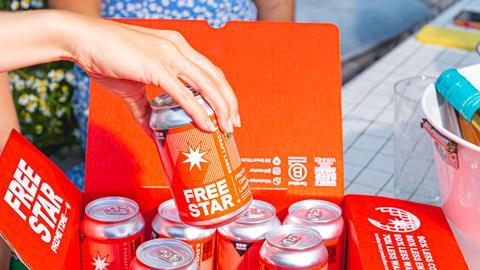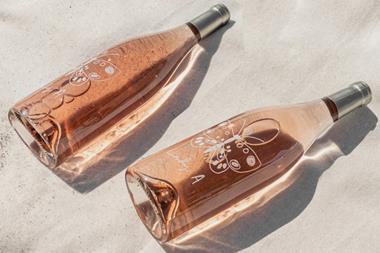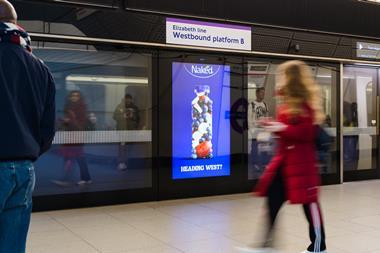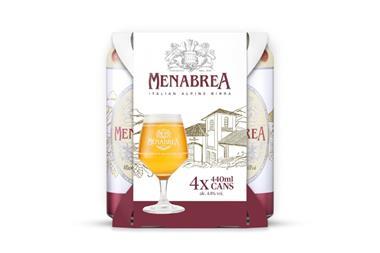Freestar was once a rising star. The low & no brand seemed to be on an upward trajectory in a category that was widely hailed as a great growth opportunity.
So its decision to wind down last week – citing a lack of volumes – has cast a cloud over the low & no market. That follows the news the team behind Infinite Session plans to diversify into booze – having found it tricky to get additional big four listings for their alcohol-free brews.
So is low & no reaching saturation?
At a total level, sales look healthy. While off-trade alcohol sales have tapered off in the wake of the pandemic, low & no-alcohol lines have bucked the trend. They’re up 13.9% in value, while total alcohol is down by 1.3% [NIQ 52 w/e 15 July]. In that same period, low & no beer – the largest sub-sector – has increased its value by 20% to £125.7m.
The problem is, many more brands are competing for a slice of that growing pie. Assosia data shows the number of alcohol-free beer brands in Asda, Morrisons, Sainsbury’s, Tesco and Waitrose has more than doubled in five years, while the number of SKUs has increased nearly threefold.
At the same time, the top 10 brands have tightened their stranglehold to represent almost 75% of category value. Having launched in 2021, Guinness 0.0 gained 6.0ppts of share in the past year. It now makes up 12.6% of value sales – second only to Heineken 0.0%, which holds 21.6% share.
“The space is dominated by larger brands, particularly in the beer space,” says NIQ senior account executive Jen Purchase, who adds “most major brands now have a low & no alternative”.
Competitive landscape
In the face of the financial and marketing might of AB InBev, Diageo and Asahi, challenger brands are struggling to get any substantial volumes.
Both Freestar and the Infinite Session team cited increasing competition as a factor in their respective decisions to wind down and diversify into booze.
“Freestar was a relatively young startup – there was nobody great and powerful behind them,” says Jordan Childs, founder of low & no brewer Mash Gang. “Looking at the margins I just couldn’t see how they could do it. They couldn’t, and it sucks.”
BRULO, an Edinburgh-based brewer listed in 400 Morrisons sites, is another feeling the squeeze of an increasingly crowded marketplace.
“We’re in talks with all the leading multiples but it is very competitive,” says the brewery’s founder James Brown. “There are some brands selling insanely cheaply in order to gain listings, even if it is to the detriment of their business long term.”
“We’ve been in Morrisons with our flagship IPA Lust for Life for 18 months now. Fortunately we have just had confirmation they are happy with rate of sale and want us to move into four packs to offer consumers better value.”
Days Brewing, whose pale ale is stocked nationally in Tesco and on Ocado, says supermarket buyers now face a tough task when selecting which brands to stock.
“Non-alcoholic beer has gone through a massive amount of growth over the last three, four years,” says co-founder Duncan Keith. “I sympathise with buyers who have an incredibly difficult job to navigate all of the innovation. Everyone is fighting for their attention.”
Supermarket space
Still, the supermarkets remain staunchly committed to growing alcohol-free. Earlier this month, Waitrose introduced new bays to showcase the category. While this was in partnership with Diageo, it promises to feature independent lines too.
Lucky Saint founder Luke Boase argues there are opportunities for these brands – and simply being a household name is no guarantee of success.
“There are mainstream brands in growth, but there are others in decline,” he says. For example, market leader Heineken 0.0 lost 1.6ppts of share last year [NIQ].
“As a well-established brand, you will get a lot of take-up. But over a one or two-year period, consumers will decide if they like your product or not,” he adds.
Days Brewing, meanwhile, points to Ocado data it says shows dedicated alcohol-free beer brands are presently outperforming alcoholic extensions.
“Dedicated brands have grown +110% versus last year [26 w/e 4 June] in this retailer whilst mainstream line extensions are only growing at 37% year-on-year,” says co-founder Mike Gammell. “We were 32% of their no/low category growth during the first six months of the year.”
“We believe there’s absolutely room for premium independent 0.0% brands like Days to help drive real category growth by bringing in incremental consumers & occasions. There’s no question it’s a competitive category - but that’s for good reason. There’s a huge opportunity to help beer evolve and stay relevant for modern consumers.”
Boase also believes smaller, challenger brands have reasons for optimism. “In the UK about 2% of total beer sales are alcohol-free [rising to 3% in grocery],” he says. “The penetration of the category is very low. Compare that to Germany, where it is 7% of total beer sales, France 10%, Netherlands 11%, and Spain above 16%.”
The key to standing out is having the most compelling offer – and one that elevates you above the giants.
“You’ve got to taste good, you’ve got to be visible and available, and consumers have got to feel good about buying your product,” adds Boase.
The strategy certainly appears to have worked for Lucky Saint, which has nearly doubled its business in the off-trade [NIQ]. When it launched in 2018, the brand was one of the first dedicated alcohol-free brewers. It is now the tenth largest brand, with sales of £4m.
And that headstart may just be a crucial point of difference. For low & no brewers starting out in today’s crowded market, making such an impression looks a far harder task.



![XOXO-Product-Shot[ALL FLAVOUR]-Sky-1920x1080](https://dmrqkbkq8el9i.cloudfront.net/Pictures/274x183/4/9/2/355492_xoxoproductshotallflavoursky1920x1080_806584_crop.jpg)





![XOXO-Product-Shot[ALL FLAVOUR]-Sky-1920x1080](https://dmrqkbkq8el9i.cloudfront.net/Pictures/380x253/4/9/2/355492_xoxoproductshotallflavoursky1920x1080_806584_crop.jpg)










No comments yet